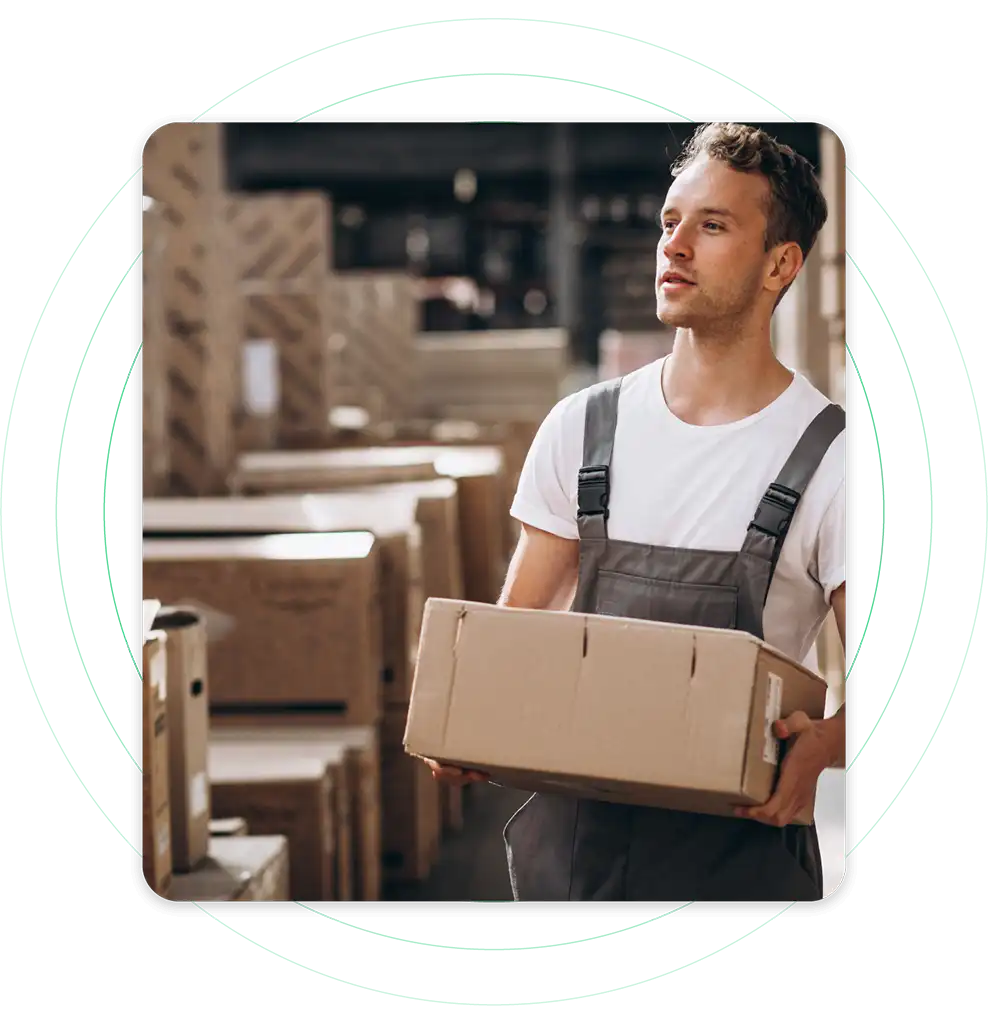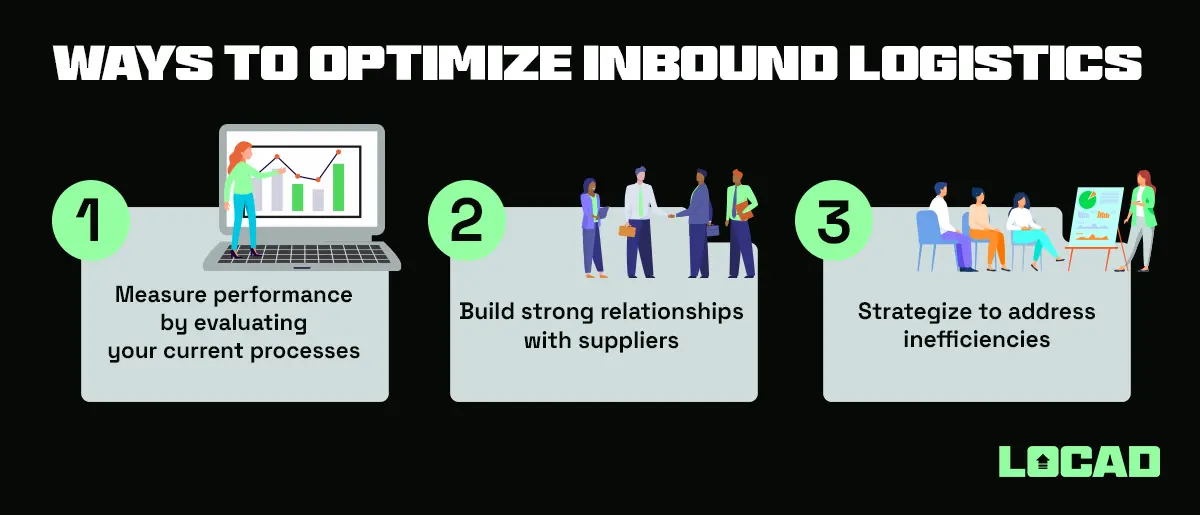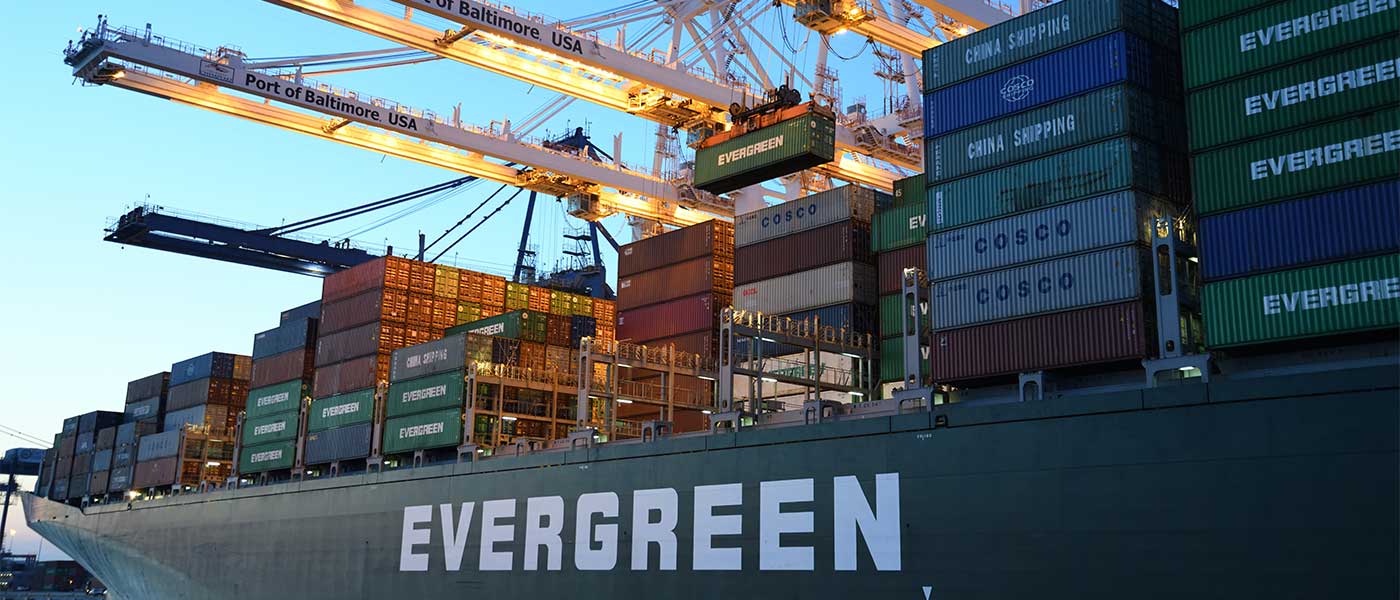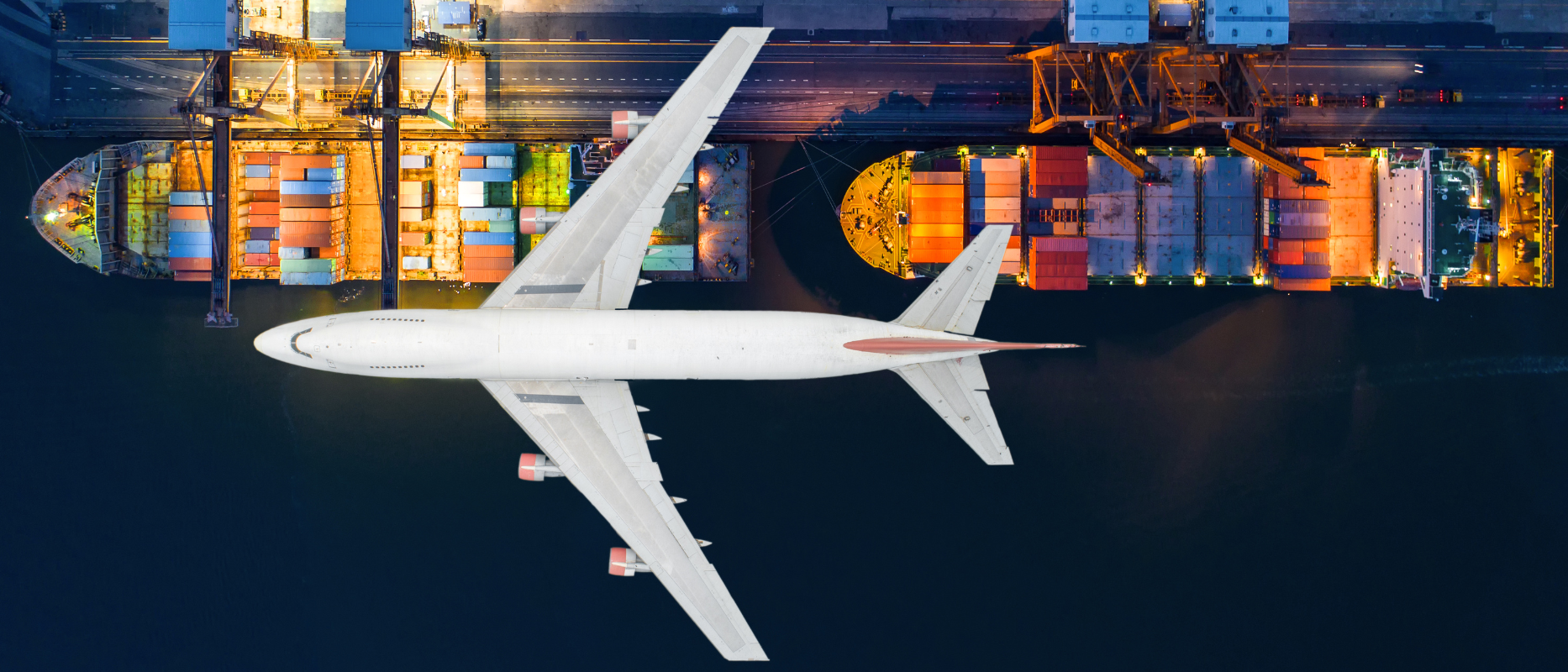Did you know that the word logistics has French roots dating back to the 1830s, with its first appearance in the literary work of a military officer? Antoine-Henri Jomini, in his ‘Summary of the Art of War’ (Précis de l’Art de la Guerre), 1838, describes logistics (French: logistique) as the practical art of moving armies.
Wondering what’s with the history lesson when the topic says inbound vs outbound logistics?
Jomini’s concept of logistics was a reference to the colossal scale of Napoleonic warfare. But with the evolution of war and the increasing complexity of troop activity, the term soon lost its relevance in military vocabulary.
Today, logistics is a term we associate with the movement of goods from one location to another. It is a vital component of modern supply chains and plays a strategic role in business. To be precise, logistics coordinates the storage and movement of equipment, goods, and inventory, from supplying raw materials to delivering finished products to end customers.
Regardless of the industry, the smooth operation of supply chains requires that inbound logistics and outbound logistics work in tandem.
Dive in to know how balancing inbound and outbound logistics can accelerate your logistics operations.
Inbound and Outbound Logistics: What Do They Mean?
Global logistics is a thriving industry, and the COVID-19 pandemic is one of the primary factors contributing to its skyrocketing growth. Per forecasts, Asia alone will account for 57% of the global e-commerce logistics market growth between 2020 and 2025. While it makes the continent a key region spearheading the advancement of the international trade and logistics sector, it also brings to light the need for companies to leverage the value of the logistics ecosystem.
So, what does it take to seize the opportunity and get a competitive advantage in the logistics market? If you’re struggling to help your logistics company gain traction, one of the first things you should do is streamline your inbound and outbound logistics strategy.

Inbound and outbound logistics are two critical components of retail supply chains. Both inbound and outbound logistics deal with storing and moving goods and products across distribution channels. The distinction between the two boils down to the stage of the supply chain where they are relevant; while inbound logistics focuses on supply, outbound logistics is about fulfilling demands.
Although the difference seems straightforward, inbound and outbound logistics are incredibly complex processes with their own quirks and challenges.
Inbound logistics
In supply chains, inbound logistics refers to the movement of goods or raw materials from a supplier, manufacturer, or other distribution channels to a business. Depending on the business model, the inbound goods can reach a retail store, a fulfillment center, or a warehouse.
Inbound logistics involves purchasing the products or sourcing materials, receiving the commodities, storage, and inventory control. If you have a manufacturing plant, inbound logistics will cover the raw materials you source for the plant. Or, if you deal with assembly, inbound logistics will comprise the finished products you acquire.
Outbound logistics
While the inbound process deals with receiving, outbound logistics is all about the transportation, storage, and delivery systems that get the products to the consumer. Put simply, outbound logistics is the last leg of the supply chain that moves the finished products to their destinations.
Outbound logistics typically originate in a distribution or fulfillment center. It essentially involves collecting the finished goods, storing them for inventory, and shipping the final goods to retailers, distributors, or end consumers.
Examples of Inbound and Outbound Logistics
Still not sure what inbound and outbound logistics are all about? Let’s consider a manufacturing company and see how it handles its inbound and outbound logistics activities.
Inbound logistics activities for a manufacturing plant
Say you are a bicycle manufacturer. Now, your inbound activities will include the incoming raw materials you need to make bicycles, such as rubber, steel, and plastics. Once you have the raw materials, you can proceed with making the bicycles and producing finished products that eventually go on to outbound logistics.
While this was a very simplified example of inbound logistics, the process is not a one-size-fits-all approach. Specific industries customize their inbound programs depending on the business size and scope.
Logistics, Shipping, and Operations: A Starting Guide
When it comes to your E-Commerce business, you put in a lot of work to get it to where it…
Outbound logistics activities for a manufacturing plant
Let’s revisit the previous example of a bicycle manufacturer. The outbound logistics of the manufacturing plant would ideally include the management, selling, and transportation of the finished products (bicycles) to the end consumers. Once you receive an order to send more bicycles to a dealership or a customer, you have to arrange for transportation. Thus, delivering the bicycles to the consumer is part of outbound logistics operations.
Like inbound logistics, outbound logistics are scalable and customizable according to the requirements and capabilities of the business.
Logistics Services for an Electronics Brand
The ever-rising global need for the latest technology and the continuing shift to e-commerce and online shopping mean electronics companies…
Inbound vs Outbound Logistics: What is the Difference?
While inbound logistics brings materials and supplies into a business, outbound logistics is about delivering finished goods and products to their destinations. So, in a business that fulfills direct-to-consumer orders, inbound logistics entails receiving goods from the manufacturer or supplier. On the other hand, outbound logistics focuses on moving the products to the end customer.
Let’s break down the differences between inbound and outbound logistics to understand the processes better:
| Inbound vs Outbound Logistics | Inbound logistics | Outbound logistics |
| Definition | Inbound logistics involves a warehouse, retail store, or fulfillment center receiving raw materials or products from a supplier/manufacturer | Outbound logistics involves every activity required to deliver the final goods or finished products from the warehouse, retail store, or fulfillment center to the end-consumer |
| Direction | Inward | Outward |
| Role | Receiving | Delivery |
| Focus | Supply | Demand |
| Processes | Procurement, sourcing and handling materials, warehouse receiving, storage | Inventory management, order fulfillment, shipping, delivery, customer service |
| Objective | Obtaining supplies and materials a business needs to make its products or directly sell to customers | Sales and revenue generation, meeting customer demands |
| Activity | Raw materials or goods coming in from manufacturers or suppliers | Finished products and goods going out to customers |
| Key relationships | Supplier, vendor, manufacturer, distributor —> Company, retailer, third-party logistics company | Company, retailer, third-party logistics company —> customers |
A Step-by-Step Breakdown of Inbound and Outbound Logistics Processes
Are you grappling with your logistics operations with the costs taking a toll on your company’s bottom line?
Inbound and outbound logistics impact the overall efficiency of the supply chain. Thus, it is easier to identify areas where you can improve when you know the nitty-gritty of the inbound and outbound logistics operations. Knowing how the processes work is crucial to lowering logistics costs, optimizing the supply chain, and managing customer expectations.
Understanding the basics of the inbound and outbound processes is vital to any business looking to gain momentum in its logistics operations.
Inbound and outbound logistics processes break down into many smaller steps, and together they ensure the smooth movement of goods and products into and out of a business.
Experience fulfillment by Locad today!

Steps in the inbound process
The inbound process is generally a six-step journey, including the possibility of reverse logistics. Given below is a detailed insight into the inbound process in logistics.
- Purchasing and sourcing – In the first step of the inbound process, companies find vendors or suppliers that can provide the goods and materials they need. Hence, companies negotiate a price and buy the materials.
- Recording and receipt – Once the company makes the payment, it records the purchase order and receives a receipt containing information such as items, quantities, and units of measurement. Recording and receipt ensure the accurate completion of each supply chain step.
- Notification and tracking – The next step involves the supplier notifying the company after shipping the ordered materials. Notifications are typically sent electronically along with real-time tracking information of the shipment.
- Arrival of load – The warehouse coordinator assigns an unload staging area once the load arrives at the warehouse or business facility. Partnering with a cloud logistics network such as LOCAD can ease your inbound planning with on-demand warehousing and multi-channel fulfillment.
- Receiving incoming supplies – Warehouse staff unload the incoming shipment and identify and count the products by scanning barcodes. They confirm acceptance only after verifying the quantity and condition of the incoming goods against the purchase order. Post verification, the receiving team puts away the inventory in the appropriate storage location. A sound inventory tracking system is indispensable to keep track of the inventory reaching and leaving the warehouse.
- Reverse logistics – Another crucial component of inbound operations is reverse logistics for handling customer returns and exchanges. The receiving team examines new shipments that reach the warehouse for return or exchange, either disposing of them or recapturing value.

Steps in the outbound process
The outbound process also entails a 6-step procedure for customer delivery. It is a thorough system that starts the moment a customer places an order. Here is a detailed look into the process.
- Customer places order – The outbound logistics process begins with the customer placing an order. In the context of e-commerce, customers place orders via online channels such as company websites or marketplaces.
- Order processing – As soon as the company receives the order, it reaches the warehouse management system (WMS) for further processing. The company validates the order and receives the ordered products from inventory.
- Replenishment – The reserve inventory replaces the purchased product in the primary storage area. The inventory replenishment stage is crucial to the inbound logistics operations since it calls for producing more goods or supplying raw materials to maintain inventory levels.
- Product picking and packing – The picking team at the warehouse picks the products from their designated inventory location. They also update the inventory count to ensure accurate stock levels. The staff then pack, label, and sort the products by destination, shipping mode, or delivery speed.
- Shipping – Once packed and labeled, carriers pick up the packages, or the warehouse team loads the shipment onto outgoing trucks for shipping to partners or distribution centers. The customer receives tracking details once the orders ship.
- Last-mile delivery – The last-mile delivery is the final step of the supply chain operations when the product reaches the end consumer’s doorstep. It is also one of the most expensive steps of the fulfillment process and requires resource optimization at its best.
Challenges of Inbound Logistics
Inbound logistics has its share of challenges, making it extremely challenging for businesses to improve warehouse productivity and efficiency.
So, what key challenges should you be wary of when dealing with inbound logistics? Let’s take a look.
- Shipping inefficiencies due to multiple factors such as vehicle breakdown, unavailability of drivers, traffic and road conditions, and other unprecedented delays.
- Inadequate shipment information resulting in transportation risks, delays in production and delivery, and higher operational costs.
- Lack of proper planning that gives rise to long queues of inbound trucks clogging the warehouse gates, staff mismanagement, unloading delays, and stalling outbound operations.
- Ensuring you have sufficient inventory to meet customer demands. Seasonal spikes, economic conditions, market competition, lack of supply, and other factors make things worse and push your business to the edge.
- Identifying product defects and damages to dispose of or refurbishing products to put them back into the inventory needs planning. Inefficient returns processing affects inventory count and customer satisfaction.
Why Do e-commerce Owners Need To Take Customer Service Seriously?
Being an extremely significant factor of any business, customer service is assistance that is provided to consumers about their purchases…

Optimizing Inbound Logistics
Since inbound logistics presents its set of challenges, here’s how you can optimize your inbound operations for the smooth movement of incoming goods or raw materials:
- Measure performance by evaluating your current processes
Identifying inefficiencies in your inbound logistics operations can help you evaluate your requirements and revamp current processes. Look for communication gaps, information delays, duplicate work, quality loss, poor customer service, and invisible costs.
- Build strong relationships with suppliers
When handling logistics, you need reliable suppliers that offer quality products and competitive pricing. Pick suppliers that can scale with your growth, evaluate supplier risks, verify supply quality certifications, check lead times and pricing models, and pay suppliers on time. Design vendor inbound compliance standards (VICS) to avoid disruptions.
- Strategize to address inefficiencies
Most importantly, develop strategies to address the limitations of your inbound logistics program. Achieve data-driven decision-making by investing in automation and analytics or simply partner with a cloud logistics network to streamline and optimize your supply chain.
Challenges of Outbound Logistics
Now, let’s look at the key challenges in outbound logistics operations.
- Monitoring various outbound processes and ensuring they are in sync with each other. With rising production and customer demands, logistics teams need to expand warehouse space and scale shipping and delivery.
- Managing inventory levels to balance demand and supply. Spikes and lulls in demand call for keeping enough inventory without increasing holding costs and overwhelming storage space.
- Transportation costs contribute to a significant chunk of outbound logistics expenses. However, spending inefficiencies and a lack of reliable transport partners impede outbound logistics.
- Customers expecting free and fast delivery has become a major logistics challenge. Two-day shipping, same-day shipping, and even two-delivery have become the norm, constantly keeping businesses on edge to ensure accurate last-mile delivery.
- Customers today demand real-time visibility into order status with the ability to track shipments at every stage of fulfillment. Offering real-time visibility to the end customer is a significant challenge if you are yet to embrace tracking technologies.

Optimizing Outbound Logistics
Isn’t that an overwhelming lot of challenges? Although outbound logistics can be a challenge for many companies, there are strategies you can implement to optimize the process.
- Increase automation
Automating outbound operations increases productivity, reduces delivery times, cuts costs, and boosts customer satisfaction. Technologies such as intelligent route optimization software use analytics, machine learning, dynamic routing, and GPS tracking to facilitate automated route planning.
- Cross-docking to reduce warehouse space usage
A cross-dock warehouse refers to a warehouse where staff sort the incoming goods quickly and load them onto outbound trucks. It reduces the time during which goods lie around in the warehouse, frees up warehouse space, allows quick inspection of incoming goods, and reduces delivery lead times.
- Consider a 3PL
Outsourcing outbound logistics to a third-party company is a smart move for businesses that find the cost and complexity of the operations overwhelming. Perks of partnering with a 3PL include volume discounts, scalability, and overall cost savings.
Is Your E-commerce Business Competition-ready?
Even amidst the pandemic, the exponential growth in e-commerce and the Asia-Pacific freight and logistics market is remarkable. With the region establishing itself as a global logistics hub, e-commerce, and logistics companies face immense competition to establish themselves as the best in the market. Achieving business profitability and meeting customer expectations is daunting, but optimizing supply chain logistics is key to success. The sooner you understand the value of having strong inbound and outbound logistics, the better!
Do you find keeping track of your inbound and outbound logistics challenging? Partnering with a cloud logistics engine like Locad brings the expertise and experience you need to scale your logistics operations. A one-of-a-kind platform in the Asia Pacific, Locad combines technology with a network of logistics partners and warehouses to deliver innovative solutions for emerging supply chain needs.
Contact us to learn more about Locad’s fast, affordable, and flexible logistics services.
What is 4PL logistics?
4PL logistics refers to the management of an entire supply chain by a fourth-party logistics provider, who oversees multiple logistics providers and integrates their services to optimize efficiency and streamline operations.
How to calculate inbound logistics?
To calculate inbound logistics, consider the total cost of transporting goods from suppliers, including freight charges, customs duties, insurance, and handling fees, and subtract any discounts or rebates received.
What is outbound logistics in a value chain?
Outbound logistics services encompass a range of activities such as order fulfillment, inventory management, transportation, and distribution, aimed at efficiently delivering products to customers and maximizing customer satisfaction.
What is reverse logistics?
Reverse logistics refers to the process of managing the return, repair, or disposal of products and materials after they have been sold or delivered, involving activities like product recall, recycling, refurbishment, and warranty repairs.














